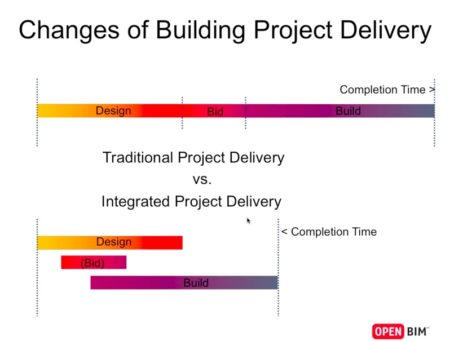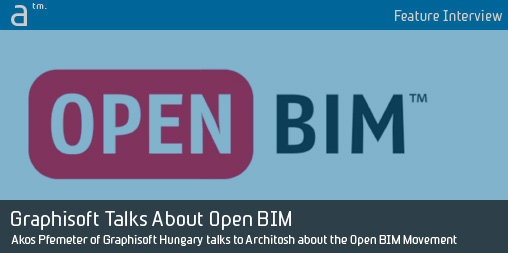A little over a week ago I was on the phone with Akos Pfemeter, Director of Global Marketing for GRAPHISOFT. It’s mid-morning for me and late afternoon for him back in Budapest, Hungary. We are discussing the joint-press release about the Open BIM movement underfoot by the buildingSMART group and an association of companies formed around the Nemetschek Group, Tekla (a Trimble company) and other independent companies.
Advertisement
At this present time BIM, or Building Information Modeling, continues to gain significant traction within the AEC industry at various paces worldwide. While it may have begun sooner in Europe for instance, than in North America, the latter region has leapt forward more aggressively. Additionally, in the North American market software giant Autodesk, with its popular Revit BIM platform, has established a notable mindshare presence with regard to the industry transformation to BIM. Within this context a group of proponents of “open” coordination workflows have begun to work harder at clarifying the advantages of what they refer to as a true “Open BIM” process…a process that allows the benefits of BIM without many of the classic limitations that can emerge around centralized file formatting.
Our discussion begins by talking about the importance of this movement.
Open BIM: Context and Importance
AFR (Anthony Frausto-Robledo): Akos, talk to me about the importance of this Open BIM movement.
AP (Akos Pfemeter): Sure. Firstly, the AEC industry has changed a lot in the past 20 or so years. In the last century AEC processes were mostly sequential, meaning that things came one after the other. Now, we are dealing with the forces of an accelerating economy that require AEC projects to finish faster also. This results in the traditional sequential order of things now to have substantial overlaps and even be fully parallel–happening at many times. (see image 01)
AFR: And how does this change the nature of collaboration in AEC?
AP: Back in the time of paper, design coordination meant that everyone would exchange paper drawings and use light tables to coordinate differences. Then 2D CAD came along and instead of light tables we overlaid Xref’d 2D CAD layers in much the same way to coordinate and discover important differences.

01 - BIM today is addressing the very nature of the transformation from traditional project delivery to "integrated" project delivery (IPD). Methodology changes are responding to "parallelization" of typical "sequential" processes of design, manufacturing and construction. BIM addresses these fundamentally but Open BIM as an approach is formulating the ideal workable solution for all parties involved.
But BIM (Building Information Modeling) fundamentally changes things including interdisciplinary coordination as well. In contrast to the 2D drawing primitives as the least common denominators of the traditional workflow, BIM carries an abundance of information that does not make sense to coordinate using the traditional approach.
AFR: But it seems there are some different views or approaches to how “coordination” or collaboration takes place within the BIM workflow. Can you define these?
next page: Approaches to BIM: The Open BIM Way




Reader Comments
Comments for this story are closed